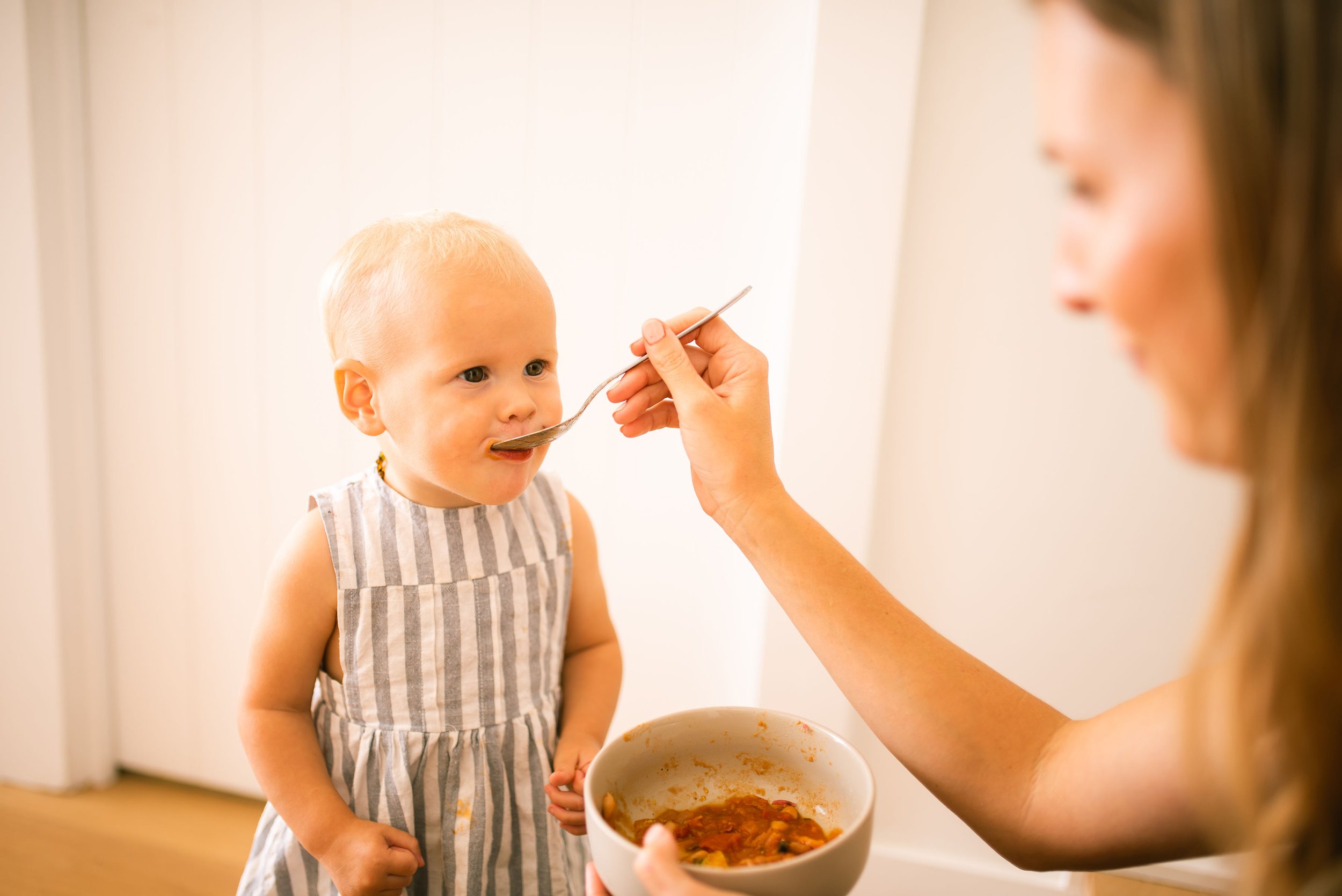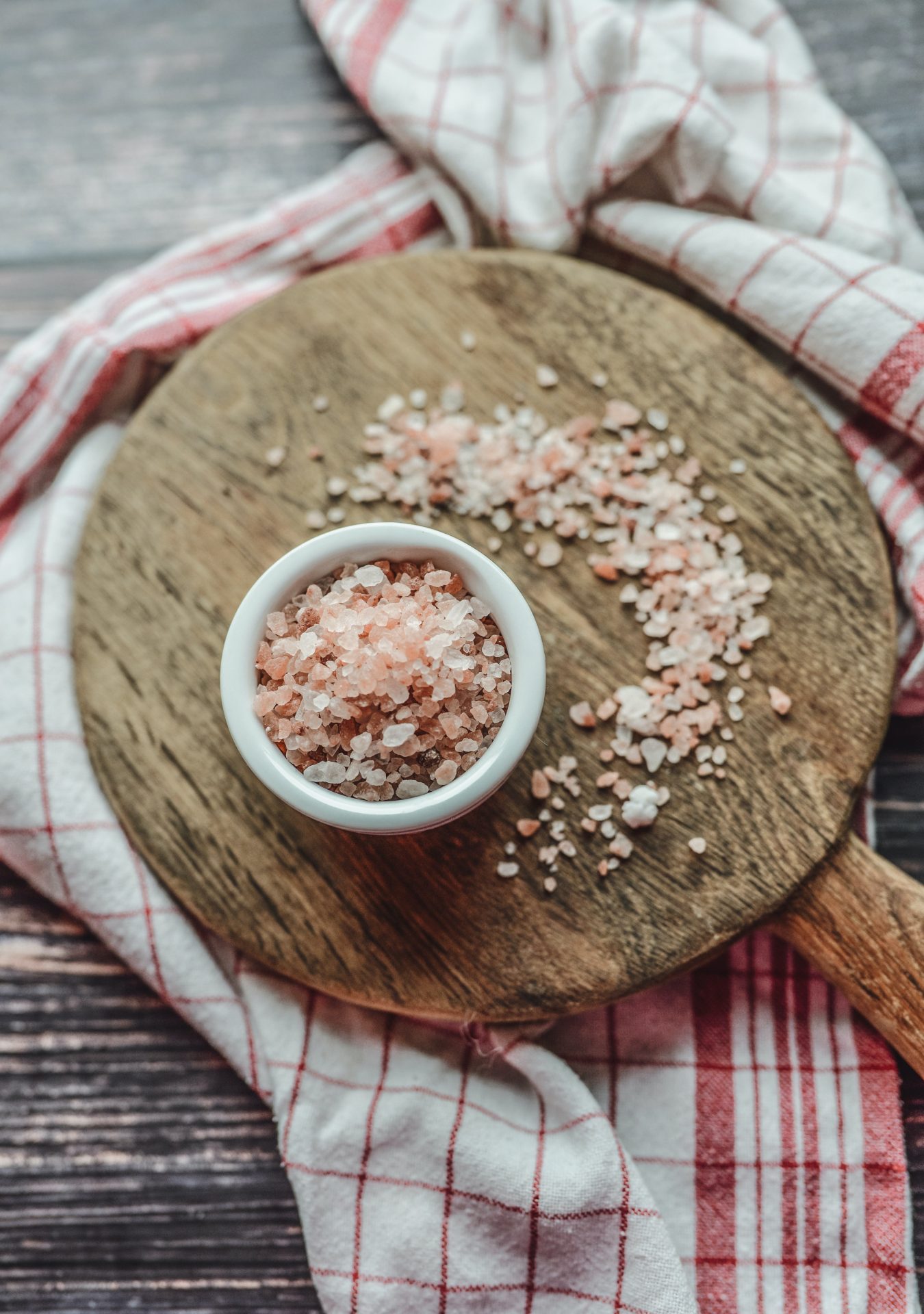Is gastro every parent’s worst nightmare? While it definitely isn’t fun for anyone involved, there are things you can do to support your little one to feel more comfortable and be back to normal as soon as possible.
Please note, if vomiting and diarrhoea are really profuse, don’t seem to be resolving, contain blood, are accompanied by severe pain, lethargy or symptoms of dehydration, or if you have any concerns at all please seek immediate medical attention.
Gastro (short for acute gastroenteritis) is typically caused by a virus, but may also be bacterial or parasitic and is characterised by episodes of vomiting and/or diarrhoea (O’Ryan et al. 2022). It is usually self-limiting (meaning it will resolve on its own) and for most children the only treatments required are supportive measures such as fluid repletion, adequate nutrition and lots of comfort (O’Ryan et al. 2022). But when you’re in the depths of it (and trying not to catch it yourself!) it can be hard to remember exactly what to do. Don’t worry, we’ve got you covered.
Hydration
Dehydration can develop quickly in a child with vomiting and diarrhoea, so offering frequent sips of fluids must be prioritised.
-
For babies under 6 months of age this will be from breastmilk or formula feeds unless otherwise instructed by your healthcare provider. You could also offer breastmilk ice blocks in a silicone feeder. For breastfed babies, offer breastmilk more frequently and on demand. For formula fed babies, offer smaller amounts more frequently.
-
For children who have started solids, fluids could include:
-
breastmilk or formula
-
water
-
coconut water
-
bone broth or miso soup
-
cooled chamomile, ginger or fennel tea
-
fresh fruit and veggie juices (small sips, diluted with water 1 part juice to 4 parts juice)
-
Breastmilk ice blocks
-
Rehydrate me drink – recipe below or use Hydramama Mini + Me (discount code BOOBTOFOOD).
-
If your child is breastfeeding, breastmilk should be prioritised no matter the age as it will not only aid hydration, but also contains potent immunoglobulins that help to reduce inflammation and support the immune system (Atyeo et al. 2021, Morrow et al. 2005).
Signs of dehydration to look out for that would warrant medical attention include (O’Ryan et al. 2022, RCH, 2018):
-
Weight loss
-
Dry mucous membranes
-
Decreased urinary output or dark/brown urine
-
Rapid breathing
-
Elevated pulse
-
Pale skin
-
Sunken eyes and absent tears when crying
-
Sunken fontanelle (in your children who still have an open fontanelle)
-
Lethargy
Rehydrate Me Drink
Ingredients
2 cups coconut water (sugar and flavour free)
⅛ tsp himalayan salt
½ inch ginger sliced
Squeeze lime juice
Method:
-
Place all ingredients in a glass jar and shake until combined.
-
Serve to your baby in small amounts throughout the day.
-
Keep the mixture in the fridge for up to 3 days.
Notes:
-
When serving to baby, strain through a fine mesh sieve to remove the pieces of ginger (for choking risk)
-
If freezing, make the mixture and allow the ginger to infuse overnight. Remove the ginger pieces the next day then freeze the liquid for up to 6 months.
-
If your baby’s hydration is a concern and not improving, please seek medical attention.
-
An icy pole/popsicle can be a choking risk for a young baby. We recommend freezing the expressed breastmilk (or formula) and allowing your baby to suck on the frozen mixture through a sterilised silicone feeder.
Nutrition
With a tender belly during and after a bout of gastro, we want to offer foods that are easy to digest and nourishing. While there are certain foods that are preferable, whatever diet your child can tolerate is also ok. Optimal choices include foods such as:
-
Vegetable based soups, preferably made with bone broth
-
Stewed apples
-
Rice with broth or miso and steamed veggies
-
Plain crackers
-
Banana smoothies
-
Roasted root veggies
-
Papaya
Research has suggested that complex carbohydrates, lean meats, yoghurt, fruits, and vegetables are better tolerated than foods containing high levels of fats and simple sugars (King et al. 2003). During the days of and following a bout of gastro you may also want to minimise or avoid:
-
Dairy foods (some children will develop a transient lactose intolerance after gastro) (Elliot 2007, Alarcon et al. 1991)
-
Rich or fatty foods, raw vegetables, sugary and processed foods, cold and icy foods and citrus fruits – these may be aggravating to a sensitive tummy, although complete avoidance or restriction is not necessary in all cases.
At the end of the day, whatever your child has an appetite for is ok!
A beautiful, nourishing and easy to digest option suitable for all ages once solids have commenced is congee. Congee is a thin rice porridge used as a staple therapeutic food in Traditional Chinese Medicine practices. It is believed to harmonise the digestive system as well as having demulcent properties – meaning it can soothe, protect and relieve inflammation of the mucous membranes (Pitchford 2002). The addition of ginger may also help to relieve nausea and vomiting (Nocerino et al. 2021)
Nourishing Ginger Congee
Ingredients
1 cup of short grain white rice
10 cups of liquid (a mix of bone broth or chicken broth and water is best, or you can do entirely broth or entirely water)
2cm knob of ginger minced or finely grated
Salt and pepper to taste
Optional
1 chicken breast or 2-3 chicken thighs
Method
-
Combine rice, broth/water, ginger and chicken if using in a pot over medium heat and bring to the boil.
-
Cover and reduce heat to simmer for 1-4 hours or until rice is thoroughly broken down into a watery porridge consistency.
-
Stir occasionally to prevent sticking to the bottom. You may also need to add additional liquid to keep the congee thin – it is better to use too much liquid than too little, and it is believed that the longer the congee cooks the more potent it becomes.
-
Remove the chicken if using, shred, then return to the pot.
-
Season with salt and pepper and a drizzle of tamari if desired.
-
Enjoy!
Note
This congee can be topped with other additions such as steamed or roasted vegetables, egg, other meats etc – particularly for other members of the family who may not be unwell and want a more hearty meal. For children who are really struggling to eat, even small sips of the congee liquid can be supportive.
Therapeutic Considerations
Some additional therapeutic extras that you may like to consider for your child include:
-
Slippery elm powder – this can be added to smoothies or other drinks in children who have commenced solids and are tolerating fibre. It is traditionally used as a demulcent (like congee!), and while studies are available for it’s use in IBS (Hawrelak et al. 2010, Reid et al. 2020) and inflammatory bowel disease (Reid et al. 2020), no studies are available to specifically support the usage in the management of gastroenteritis.
-
Partially hydrolysed guar gum (PHGG) – a prebiotic fibre which has been shown to reduce diarrhoea in both adults and children (Alam et al. 2000). PHGG can be added to smoothies or other beverages, again only in children who have already commenced solids and are tolerating larger amounts of fibre.
-
Saccharomyces boulardii – a non-pathogenic yeast which has been shown to reduce diarrhoea (Szajewska et al. 2020, Feizizadeh et al. 2014, Das et al. 2016), and also increase secretory IgA – a mucosal immunoglobulin that may help to enhance the intestinal immune response.
-
Probiotic strains Lactobacillus rhamnosus GG and Lactobacillus reuteri – strain specificity is key here (you don’t want to take just any old strain!) and the research on these two strains demonstrates a reduced duration of diarrhoea and hospitalisation (Patro-Gołąb et al. 2019, Szajewska et al. 2019) in children with acute viral gastroenteritis.
-
Carob powder – this delicious powder which can be added to smoothies, bliss balls, porridge or other sweets has been shown to reduce both diarrhoea and vomiting in children (Goulas et al. 2016, Gross et al. 1954) – although admittedly the research on vomiting probably needs an update as it was done in the 1950’s! However given the palatability, low risk of adverse effects and positive outcomes for diarrhoea, it would certainly be worth a try.
Please seek professional guidance before administering any supplements to your child
While there are many ways that gastro can be managed at home, and for most children this will be all that is required, there are some red flags to be aware of that would suggest your child needs immediate medical attention. These include:
-
Any child under 6 months of age
-
Temperature ≥38°C for infants <3 months or ≥39°C for children 3 to 36 months
-
Visible blood in the stool or black/melena stool
-
Frequent and substantial volumes of diarrhoea and vomit
-
Persistent vomiting or diarrhoea that lasts more than 7 days
-
Signs of dehydration (see above)
-
Inability to tolerate fluids at home
-
Other existing underlying medical condition
-
Any time you feel at all concerned
Has gastro been through your household? What did you find most helpful to manage it and get your little ones feeling better. Let us know below x
WRITTEN BY:
Kate Holm (Naturopath & Nutritionist)
REVIEWED BY:
Luka McCabe (RN/RM/Nutrition Consultant)
REFERENCES
Alam NH, Meier R, Schneider H, Sarker SA, Bardhan PK, Mahalanabis D, Fuchs GJ, Gyr N. Partially hydrolyzed guar gum-supplemented oral rehydration solution in the treatment of acute diarrhea in children. J Pediatr Gastroenterol Nutr. 2000 Nov;31(5):503-7. doi: 10.1097/00005176-200011000-00010. PMID: 11144434.
Alarcon P, Montoya R, Perez F, Dongo JW, Peerson JM, Brown KH. Clinical trial of home available, mixed diets versus a lactose-free, soy-protein formula for the dietary management of acute childhood diarrhea. J Pediatr Gastroenterol Nutr. 1991 Feb;12(2):224-32. doi: 10.1097/00005176-199102000-00015. PMID: 2051273.
Caroline Atyeo, Galit Alter,The multifaceted roles of breast milk antibodies, Cell, Volume 184, Issue 6, 2021, Pages 1486-1499, ISSN 0092-8674, https://doi.org/10.1016/j.cell.2021.02.031 (accessed 02.12.22)
Das S, Gupta PK, Das RR. Efficacy and Safety of Saccharomyces boulardii in Acute Rotavirus Diarrhea: Double Blind Randomized Controlled Trial from a Developing Country. J Trop Pediatr. 2016 Dec;62(6):464-470. doi: 10.1093/tropej/fmw032. Epub 2016 Jun 9. PMID: 27283364.
Elliott EJ. Acute gastroenteritis in children. BMJ. 2007 Jan 6;334(7583):35-40. doi: 10.1136/bmj.39036.406169.80. PMID: 17204802; PMCID: PMC1764079.
Feizizadeh S, Salehi-Abargouei A, Akbari V. Efficacy and safety of Saccharomyces boulardii for acute diarrhea. Pediatrics. 2014 Jul;134(1):e176-91. doi: 10.1542/peds.2013-3950. PMID: 24958586.
Goulas V, Stylos E, Chatziathanasiadou MV, Mavromoustakos T, Tzakos AG. Functional Components of Carob Fruit: Linking the Chemical and Biological Space. Int J Mol Sci. 2016 Nov 10;17(11):1875. doi: 10.3390/ijms17111875. PMID: 27834921; PMCID: PMC5133875.
Gross H. Beitrag zur Behandlung des Säuglingserbrechens mit Johannisbrotkernmehl (Nestargel) [The treatment of vomiting in infants with carob flour (Nestargel)]. Wien Med Wochenschr. 1954 Oct 30;104(44):885-6. German. PMID: 14348894.
Hawrelak JA, Myers SP. Effects of two natural medicine formulations on irritable bowel syndrome symptoms: a pilot study. J Altern Complement Med. 2010 Oct;16(10):1065-71. doi: 10.1089/acm.2009.0090. PMID: 20954962.
King CK, Glass R, Bresee JS, Duggan C; Centers for Disease Control and Prevention. Managing acute gastroenteritis among children: oral rehydration, maintenance, and nutritional therapy. MMWR Recomm Rep. 2003 Nov 21;52(RR-16):1-16. PMID: 14627948.
Miguel G O’Ryan, Morven S Edwards, Mary M Torchia, Acute viral gastroenteritis in children in resource-rich countries: Clinical features and diagnosis, 27 September 2022, Up To Date, https://www.uptodate.com/contents/acute-viral-gastroenteritis-in-children-in-resource-rich-countries-clinical-features-and-diagnosis (accessed 02.12.22)
Morrow AL, Ruiz-Palacios GM, Jiang X, Newburg DS. Human-milk glycans that inhibit pathogen binding protect breast-feeding infants against infectious diarrhea. J Nutr. 2005 May;135(5):1304-7. doi: 10.1093/jn/135.5.1304. PMID: 15867329.
Nocerino R, Cecere G, Micillo M, De Marco G, Ferri P, Russo M, Bedogni G, Berni Canani R. Efficacy of ginger as antiemetic in children with acute gastroenteritis: a randomised controlled trial. Aliment Pharmacol Ther. 2021 Jul;54(1):24-31. doi: 10.1111/apt.16404. Epub 2021 May 21. PMID: 34018223; PMCID: PMC8252074.
Patro-Gołąb B, Szajewska H. Systematic Review with Meta-Analysis: Lactobacillus reuteri DSM 17938 for Treating Acute Gastroenteritis in Children. An Update. Nutrients. 2019 Nov 14;11(11):2762. doi: 10.3390/nu11112762. PMID: 31739457; PMCID: PMC6893691.
Pitchford Paul, Healing with wholefoods: Asian traditions and modern nutrition, 3rd edition, 2002
Ried K, Travica N, Dorairaj R, Sali A. Herbal formula improves upper and lower gastrointestinal symptoms and gut health in Australian adults with digestive disorders. Nutr Res. 2020 Apr;76:37-51. doi: 10.1016/j.nutres.2020.02.008. Epub 2020 Feb 8. PMID: 32151878.
Szajewska H, Kołodziej M, Gieruszczak-Białek D, Skórka A, Ruszczyński M, Shamir R. Systematic review with meta-analysis: Lactobacillus rhamnosus GG for treating acute gastroenteritis in children – a 2019 update. Aliment Pharmacol Ther. 2019 Jun;49(11):1376-1384. doi: 10.1111/apt.15267. Epub 2019 Apr 25. PMID: 31025399.
Szajewska H, Kołodziej M, Zalewski BM. Systematic review with meta-analysis: Saccharomyces boulardii for treating acute gastroenteritis in children-a 2020 update. Aliment Pharmacol Ther. 2020 Apr;51(7):678-688. doi: 10.1111/apt.15659. Epub 2020 Feb 13. PMID: 32056266.





+ show comments
- Hide Comments
add a comment